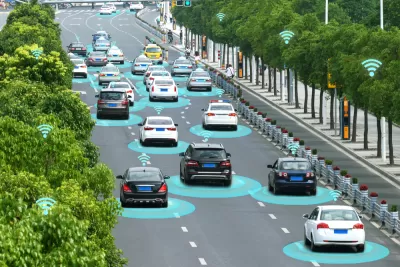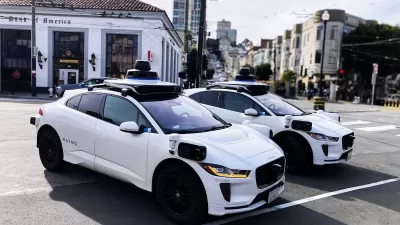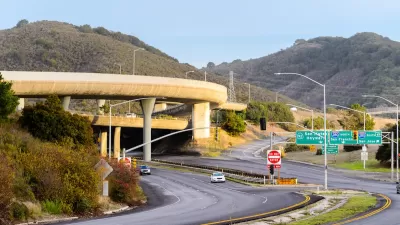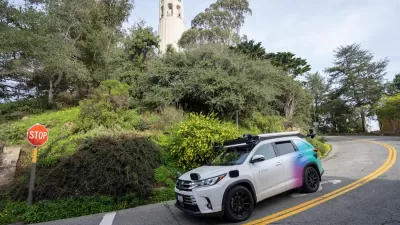A new report details the promise and perils of the growing autonomous vehicle industry.

A new report from the Urban Institute outlines the potential benefits and pitfalls of autonomous vehicles. Dan Zukowski summarizes the report for Smart Cities Dive.
According to the report, “Self-driving cars have the potential to increase transportation equity and safety but need regulation at all levels of government to avoid worsening urban sprawl, climate change and public health.”
In theory, AVs could improve mobility for people with disabilities and mobility impairments, reduce climate impacts, and make transportation more accessible. But without more robust regulations and investments in public transit and other multimodal infrastructure, AVs could add to traffic congestion and encourage sprawl. As the Urban Institute’s Yonah Freemark explains, “The ability to travel longer distances without the task of driving could encourage people to live further from urban centers.”
The report calls for a “substantial” expansion of testing and data collection for AV crashes and “recommends that states and local governments work with transit agencies to encourage multimodal options, ensure ride-hailing AVs serve all communities and follow Americans with Disabilities Act requirements, and develop policies to encourage the use of zero-emission AVs.” The report acknowledges that widespread adoption of AVs is still in the distant future, but ride-hailing companies may be some of the earliest to adopt the technology.
FULL STORY: Self-driving cars’ benefits, perils outlined in new report

Alabama: Trump Terminates Settlements for Black Communities Harmed By Raw Sewage
Trump deemed the landmark civil rights agreement “illegal DEI and environmental justice policy.”

Planetizen Federal Action Tracker
A weekly monitor of how Trump’s orders and actions are impacting planners and planning in America.

The 120 Year Old Tiny Home Villages That Sheltered San Francisco’s Earthquake Refugees
More than a century ago, San Francisco mobilized to house thousands of residents displaced by the 1906 earthquake. Could their strategy offer a model for the present?

In Both Crashes and Crime, Public Transportation is Far Safer than Driving
Contrary to popular assumptions, public transportation has far lower crash and crime rates than automobile travel. For safer communities, improve and encourage transit travel.

Report: Zoning Reforms Should Complement Nashville’s Ambitious Transit Plan
Without reform, restrictive zoning codes will limit the impact of the city’s planned transit expansion and could exclude some of the residents who depend on transit the most.

Judge Orders Release of Frozen IRA, IIJA Funding
The decision is a victory for environmental groups who charged that freezing funds for critical infrastructure and disaster response programs caused “real and irreparable harm” to communities.
Urban Design for Planners 1: Software Tools
This six-course series explores essential urban design concepts using open source software and equips planners with the tools they need to participate fully in the urban design process.
Planning for Universal Design
Learn the tools for implementing Universal Design in planning regulations.
Clanton & Associates, Inc.
Jessamine County Fiscal Court
Institute for Housing and Urban Development Studies (IHS)
City of Grandview
Harvard GSD Executive Education
Toledo-Lucas County Plan Commissions
Salt Lake City
NYU Wagner Graduate School of Public Service





























